The U.S. Navy’s Helicopter Sea Combat Squadron 85, or HSC-85, also known as the “Firehawks,” helped members of a specialized U.S. Coast Guard counter-terrorism unit train to rappel down and quickly board a ship where terrorists might be in control and holding hostages last month. The crews of HSC-85, the Navy’s only helicopter squadron dedicated to providing special operations forces support, are very familiar with the tactics, techniques, and procedures required for these kinds of Helicopter Visit Board Search and Seizure operations. The Navy now wants to shutter HSC-85 as part of its 2021 Fiscal Year budget proposal to help free up funds for other priorities.
The MH-60S Seahawk from HSC-85, which is part of the Navy Reserve, joined elements of the Coast Guard’s Maritime Safety Response Team West (MSRT West) and the Navy’s Aerial Target Launch Ship 9701 (ATLS 9701) for the exercise off the coast of San Diego, California on Feb. 11, 2020. Another MH-60S from the “Black Knights” of Helicopter Sea Combat Squadron 4 (HSC-4) also took part in the training.
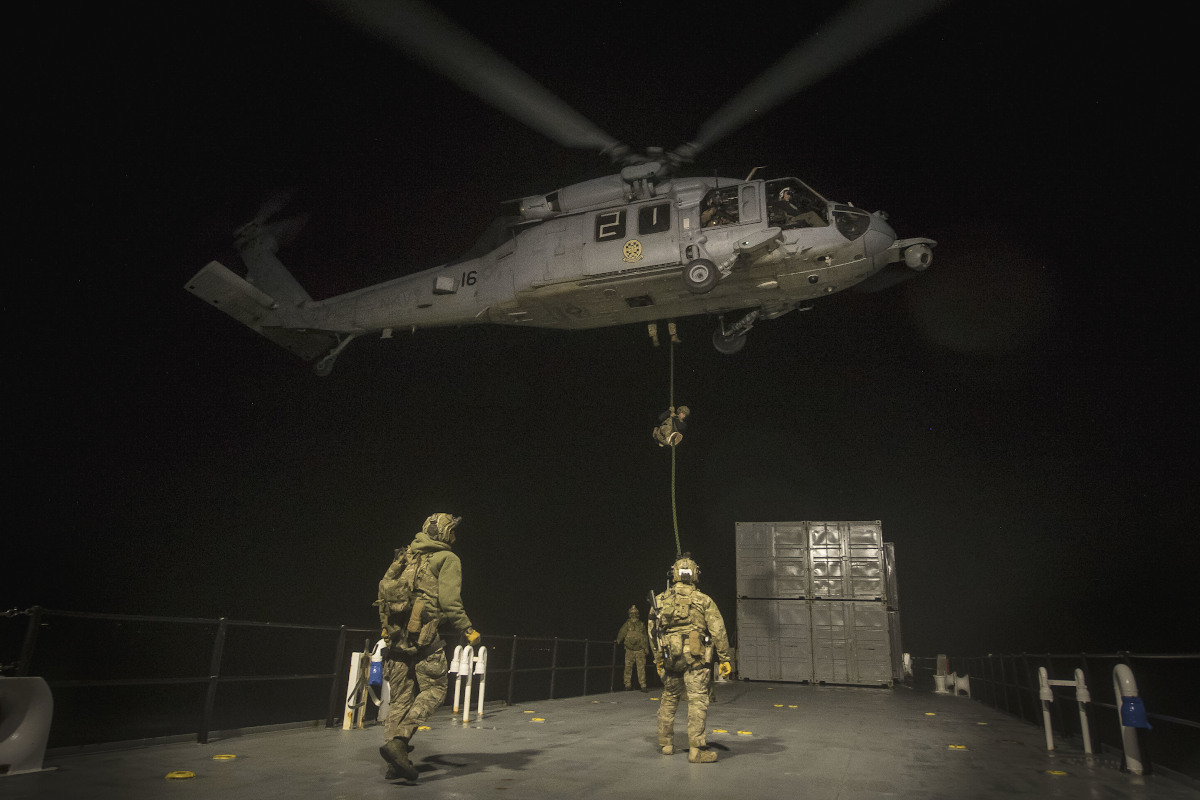
The two MH-60S helicopters flew members of MSRT West out to ATLS 9701 on simulated Helicopter Visit Board Search and Seizure (HVBSS) missions during the day and at night. The helicopters also extracted some of the Coast Guardsmen by winching them back up into the helicopter afterward.
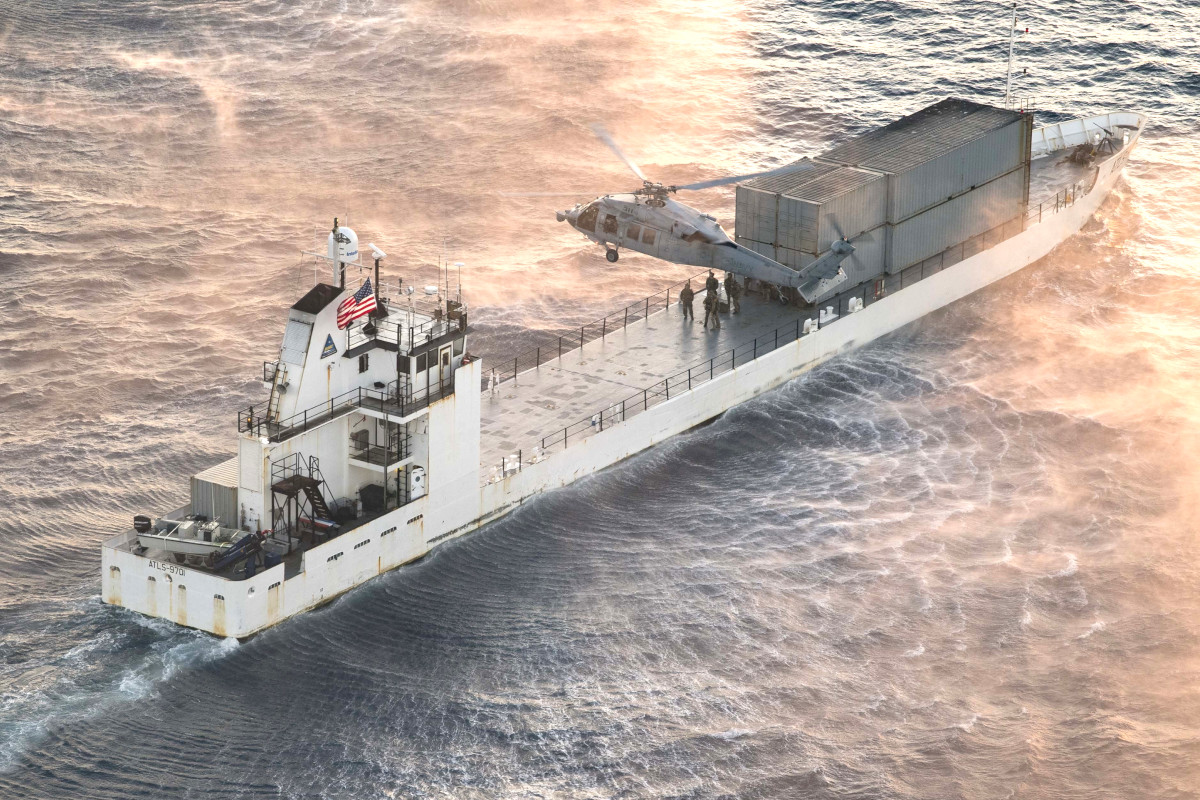

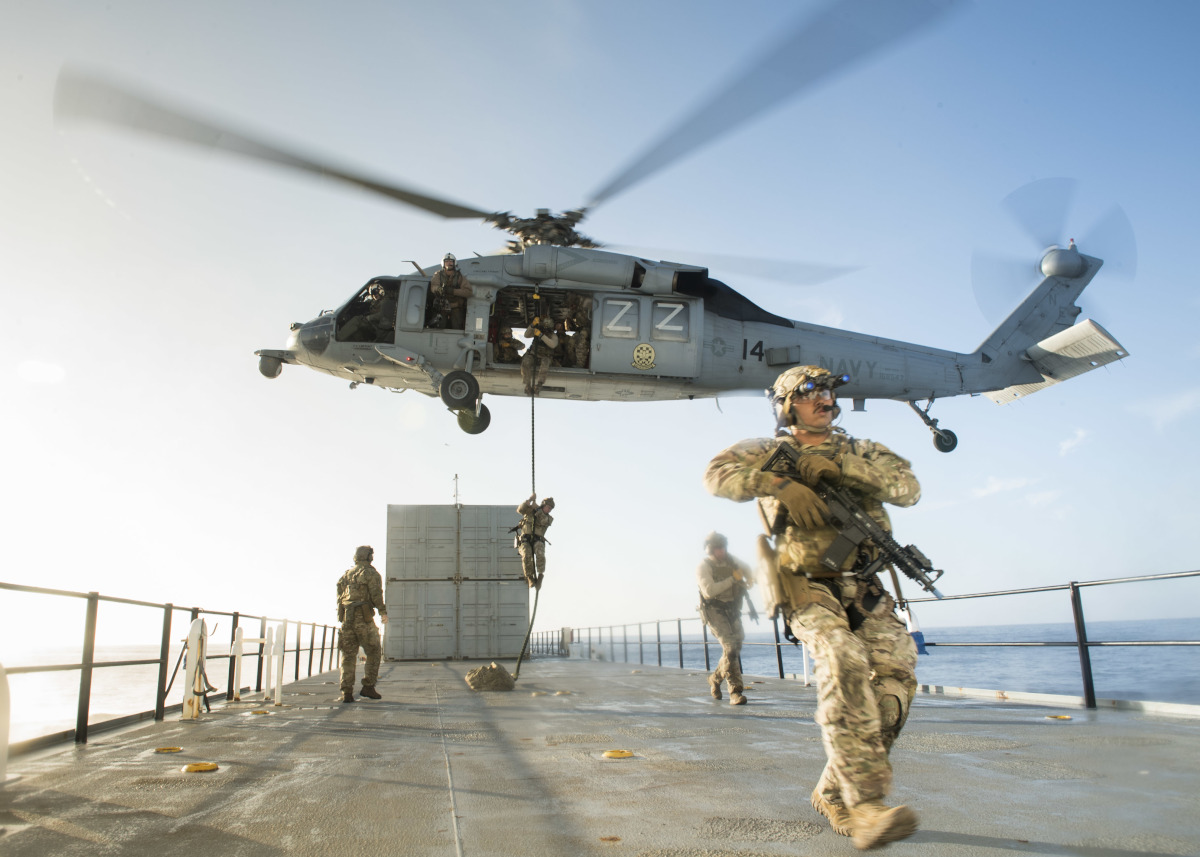
The Coast Guard established MSRT West, together with MSRT East based on the east coast, in 2006 as dedicated counter-terrorism teams capable of performing direction action missions against terrorists who might be occupying a ship or facility on shore. The MSRTs are among the most elite of the Coast Guard’s Deployable Operations Group and their personnel routinely train with members of U.S. military special operations units, such as the Navy SEALs, and tactical teams from federal law enforcement agencies, such as the Federal Bureau of Investigation and U.S. Customs and Border Protection.
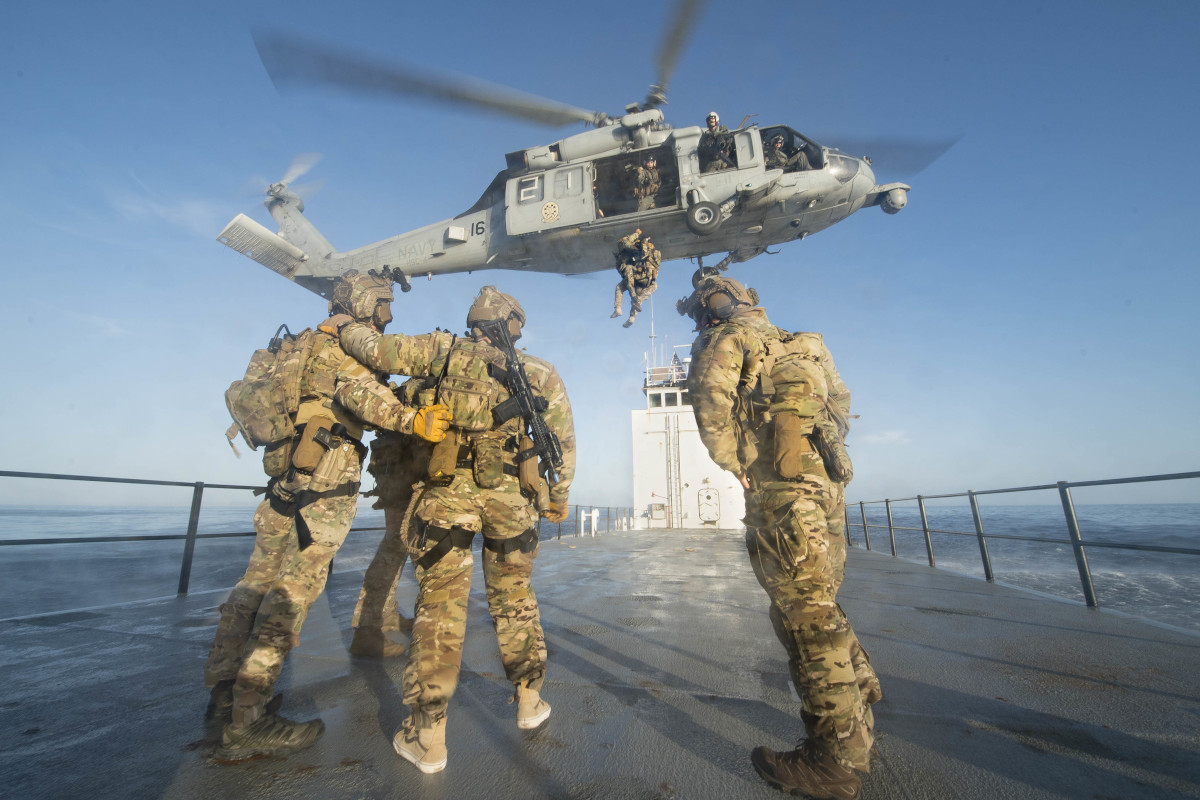
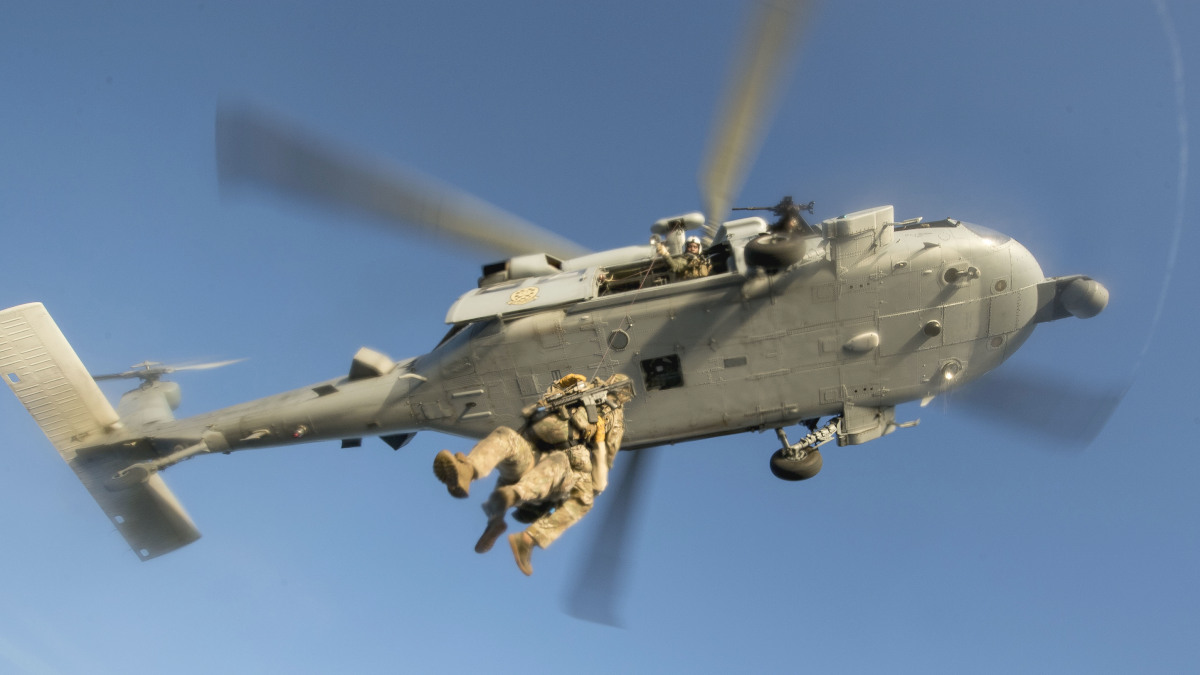
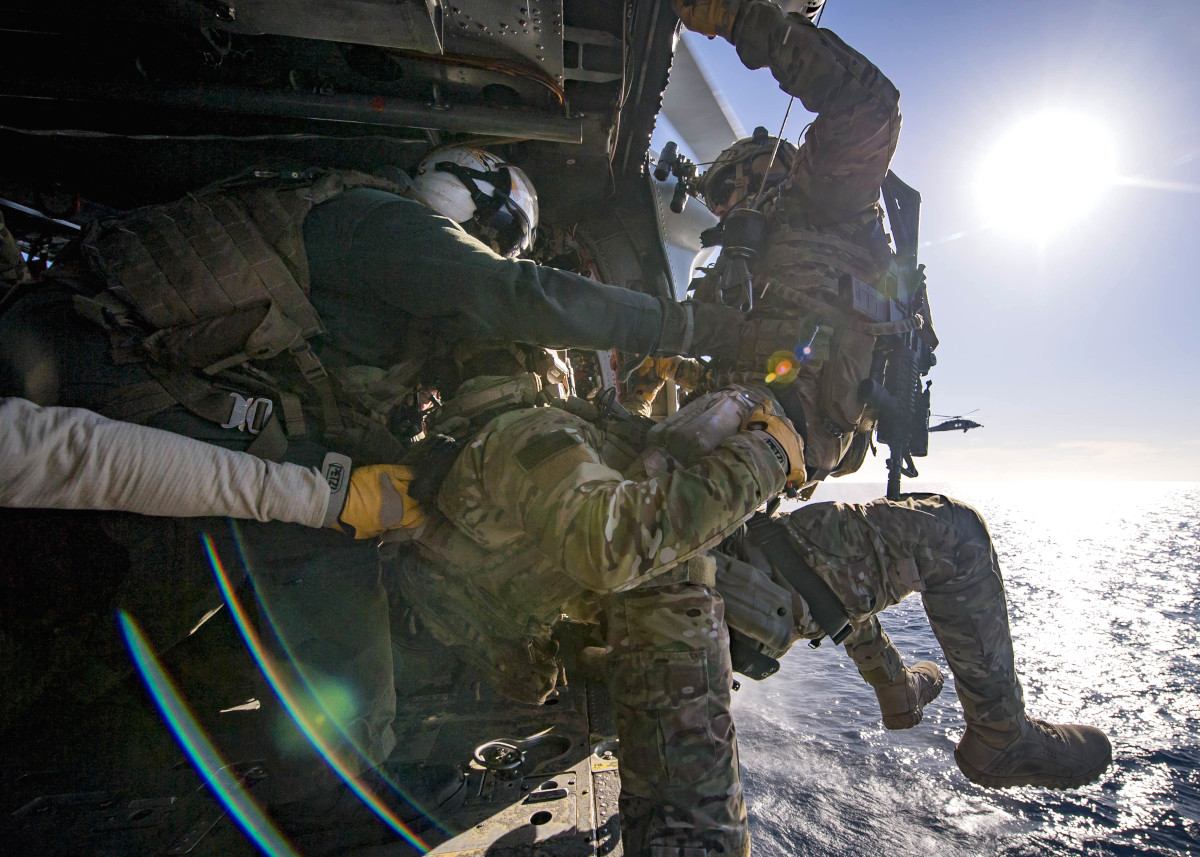
The MSRTs’ mission set includes being prepared to conduct higher risk HVBSS missions, so training with units such as HSC-85 is also something that occurs regularly. Though Hollywood military and action movies make it look simple, fast-roping from a helicopter, especially onto a ship bobbing up and down, is something that definitely requires routine practice.
Helicopter crews also need to be proficient in being able to safely get into the right position and maintain a steady hover, potentially in a very confined space, while the personnel on board are rappelling down to the ground or ship’s deck below. This can be a tricky proposition under the best circumstances and even more so at night and if hostiles below are shooting back. You can read about all the planning that goes into these kinds of operations in this past War Zone piece.
The Navy and Marines, often use the 264-and-a-half-feet-long ATLS 9701, the only ship of its kind in service, for HVBSS training because it has a flat open main deck. The U.S. military, as well as the Coast Guard, also often uses chartered vessels for fast-rope training.
The nearly 860-ton-displacement ATLS 9701 is also approved for various other specialized training roles, such as carrying targets for snipers riding in helicopters and providing space for personnel to train to breach a ship’s hatches or shipping container doors, or to otherwise conduct operations in the confined spaces of a ship. As its name suggests, VT Halter Marine originally built the ship, which is capable of operating in an unmanned mode, for the Navy to support other exercises, as well as research and development and operational test and evaluation activities, by serving as a launchpad for unmanned target drones.
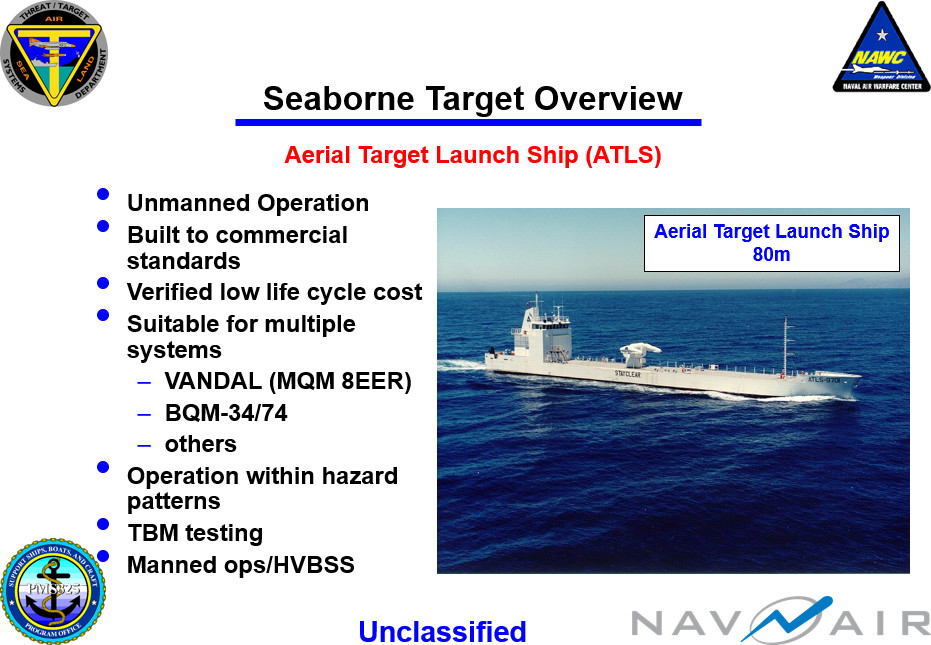
ATLS 9701 looks to set to continue to be a useful training platform for the Coast Guard’s MSRTs and other specialized units for years to come. However, the future of HSC-85 is anything but certain. In its latest budget request for the 2021 Fiscal Year, the Navy announced plans to inactivate the squadron, which would eliminate the service’s last dedicated special operations support helicopter unit.
HSC-85, which was officially established in 1970, took on the special operations support mission, as well as the Firehawks name, in 2011. This came five years after the Navy shuttered Helicopter Combat Support Squadrons (Special) 5, or HCS-5. That squadron had also been known as the Firehawks.
In 2006, the Helicopter Combat Support Squadrons (Special) 4, or HCS-4, also known as the Redwolves, had closed its doors, with Helicopter Sea Combat Squadron 84 (HSC-84) taking over its special operations support mission. HCS-4 and HCS-5, which were also Navy Reserve squadrons, had evolved from the famous Vietnam War-era Helicopter Attack Squadron (Light) 3, or HA(L)-3, the “Seawolves,” which provided support for SEALs and other specialized units in the Mekong Delta region.
The Navy had begun looking to cut HSC-84 and HSC-85 in 2013. Three years later, the service succeeded in inactivating HSC-84, but pressure from Congress help preserve HSC-85. The service is now making arguments for getting rid of the remaining squadron again.
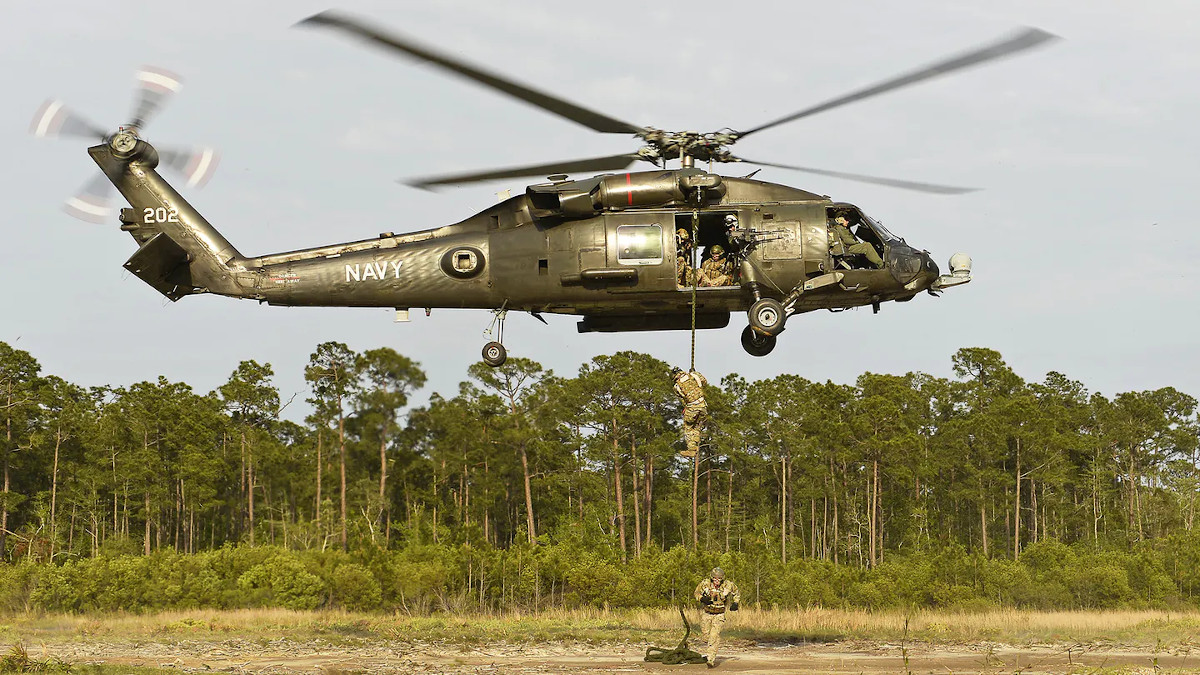
“While HSC-85 is a dedicated SOF [special operations] support unit with highly trained aviators and some unique equipment, General Purpose Force HSC squadrons are trained and equipped to provide similar capability – particularly in maritime environments,” a briefing book accompanying the Navy’s 2021 Fiscal Year budget request explained. “Further, the U.S. Army and U.S. Air Force maintain aviation SOF support capability that is more robust and better resourced, and those units enjoy a close support relationship with USSOCOM [U.S. Special Operations Command].”
The helicopters assigned to the Army’s Special Operations and Air Force Special Operations Command’s CV-22B Osprey tilt-rotors are definitely much more capable than the MH-60S in the special operations support role. The Seahawks are notably not capable of refueling in flight, which significantly limits their operational range. HSC-85’s status as a Navy Reserve unit also means that its helicopters are low on the priority list to receive other important modifications and upgrades. You can read much more about these issues in detail in this past War Zone piece.
Congress still has to approve the Navy’s plan to shutter HSC-85. The fact that HSC-4’s took part in this recent Helicopter Visit Board Search and Seizure exercise does support the service’s argument that other helicopter sea combat squadrons can provide similar support for special operations and other specialized units, such as the Coast Guard’s Maritime Safety Response Teams, going forward.
Contact the author: joe@thedrive.com
